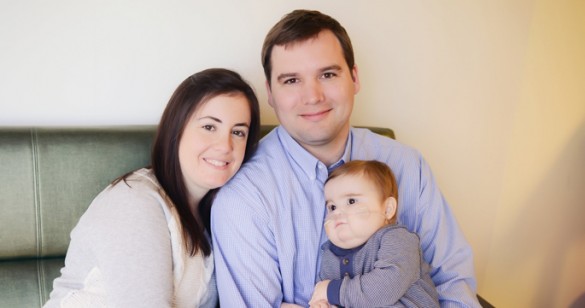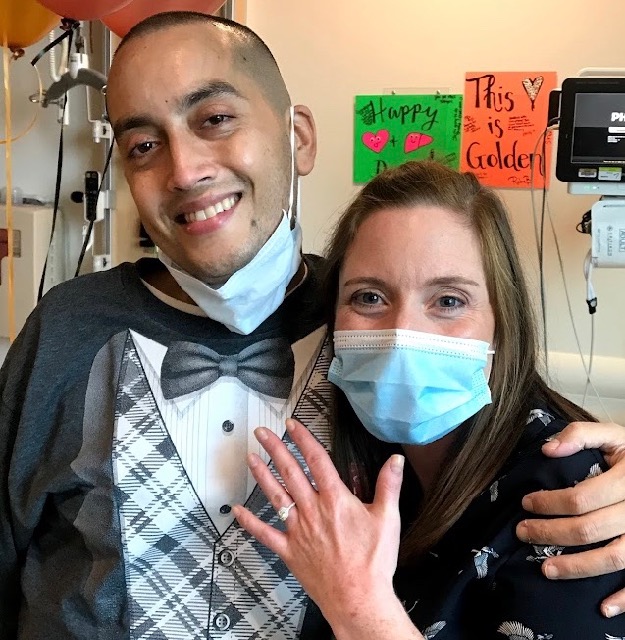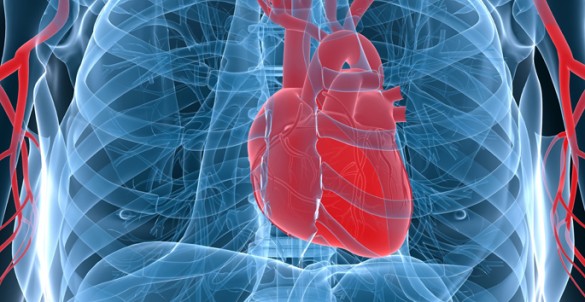
Twenty-month old Luke Reaves pushed a pig-shaped wooden toy off his hospital bed, then waited to hear the “smack” as it hit the hard floor below.
“Dah,” his voice sounded pointing down. His mother, Emily Reaves, chuckled as he dropped more wooden animal shapes. She’s thankful now to be able to share these moments with him following his heart transplant.
Luke was diagnosed a year ago with cardiomyopathy (a weakened heart muscle) caused by a rare hereditary metabolic disorder, Barth syndrome.
With only about 200 reported cases of Barth worldwide, finding a hospital that understood a metabolic heart condition like Luke’s was important for Emily and Jason Reaves, even if it meant traveling outside Alabama. They learned that Monroe Carell Jr. Children’s Hospital at Vanderbilt cardiologists had expertise to treat children with these conditions, including Barth.
“Most pediatric institutions have someone in genetics who can make the proper diagnosis in these children. However, these children often present first to cardiology,” said Vernat Exil, M.D., a pediatric cardiologist at Children’s Hospital. “Many pediatric heart institutes do not have pediatric cardiologists with the expertise. So, because Barth is a rare disease, it is possible to miss the diagnosis, as it is not often seen.”

Luke was a happy, healthy, thriving infant his first six months, weighing nearly 20 pounds. Emily Reaves raised concerns at his 6-month checkup that he wasn’t rolling. His pediatrician thought maybe Luke’s chubbiness was a lot to roll.
But at 8 months old, Luke wasn’t nursing well and was fussy. After a day of few wet diapers, he saw his pediatrician for a possible infection and dehydration.
“He listened to his heart and it was in a gallop. There I was sitting in the doctor’s office with a 20 ½ pound 8-month-old, and he looked nothing but healthy. We got an X-ray at the pediatrician’s office that day. His heart was enlarged,” said Emily Reaves.
Doctors in Alabama diagnosed Luke with dilated cardiomyopathy, an enlarged left ventricle and heart failure.
“You feel tricked that for the first six months you think you have a ‘normal’ child. You worry about him and what he is going to have to go up against,” Emily Reaves said.
While the cause of cardiomyopathy is often unknown, doctors ran blood and urine tests. Luke’s unusually chubby cheeks set off red flags. Metabolic testing revealed Barth syndrome, a genetic, neuromuscular disorder passed from mothers, who are carriers, to sons. Characteristics can include a cherubic face, neutropenia (lack of ability to fight infections), muscle weakness and growth delays.
“What makes a metabolic heart condition dangerous is the fact that affected children often appear normal, but they can get sick pretty quickly,” said Exil. “There is a high incidence of sudden death in the first year of life (before the Barth diagnosis is made).
Exil see patients with various metabolic conditions like Barth, performing extensive research on the issue. His work examines the inherited defects that affect cells’ mitochondria (the power house of the cell) and the lack of normal chemical reaction required for the heart to pump, function properly.
After Luke’s diagnosis, doctors managed his heart failure with medications. He celebrated his first birthday June 18, 2013, but as the weeks wore on his lethargy worsened and he became fussier. The Reaves then met with Exil.
“Exil really won us over,” said Emily Reaves. “Luke’s heart function still wasn’t that bad, but I think he could really see the next couple months. He told us, ‘Here we are beginning of July, and cold weather is around the corner. If he gets sick it could really affect his heart. I think we should look at getting him worked up for heart transplant.’”
Luke was admitted to Children’s Hospital shortly after and listed for a heart on Aug. 2. In the months following, he went on a ventricular assist device to help his heart function and dealt with blood clots. The cardiology team helped him bounce back.
On Jan. 28 Luke’s parents got the call — a heart was available.
“Those first couple of days it didn’t feel real. I was in shock. So many things just seemed to fall into place,” Emily Reaves said.
Brett Mettler, M.D., director of Pediatric Cardiac Transplantation and Mechanical Support at Children’s hospital, performed Luke’s heart transplant and was part of the team that helped him over his hurdle with blood clots.
“We are privileged within the Pediatric Heart Institute to have someone with Dr. Exil’s expertise and experience,” Mettler said. “He understands the intricacies of the specific genetic syndrome outside of the cardiovascular system, which translates to improved complete patient care. With Debra Dodd, M.D., medical director of the Pediatric Heart Transplant Program, and Dr. Exil, our kids receive the best heart failure care available. It’s a truly spectacular team.”
Emily Reaves was thankful they had found Exil, but especially grateful to the family who gave her son a second chance.
“If only we could find some way to make that decision (organ donation) easier for families,” she said. “He wouldn’t be like this today if it weren’t for that family who had to make a great decision in a horrible time in their life.”















